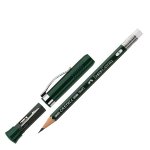Thanks guys!
Well, after the 2nd coat/finish is applied, that room will be done. It already has a large shelf and a cabinet for storage. That's it.
Next part/ or better one of the next parts of the ongoing basement project will be to give this,
(Don't mind the cables, that was done by a so called "professional" "German master electrician" back in the day. (...)
which, when seen whole, looks like this,
(Heizkörper = radiator)
a more friendly, much lighter in color, all around better appearance.
But I'm not yet sure how to pull that off, especially since I do not want to tear it down completely and rebuild from scratch.
I have a brainstorming type thread going on, in a German woodworking forum.
If someone wants to contribute here, I'll be all ears.
My current idea is:
Remove all the thin, dark material, and replace with 5mm birch plywood. Use the same 5mm birch plywood to fill the dark doors. (Simply glue on top). Re-use the hardware. (Hence the 5mm limit) Remove frame and grate in front of radiator, re-use. Everything gets sanded and finished with a clear coat.
Some more details.
Thickness of all thin materials used.
Old hinges. (Actually screwed to the substructure, inside the cabinets)
Recessed filling of doors, hence the idea to simply glue in 5mm sheets of plywood.
Overall thickness of trim around doors.
Backside of door.
Kind regards,
Oliver













































